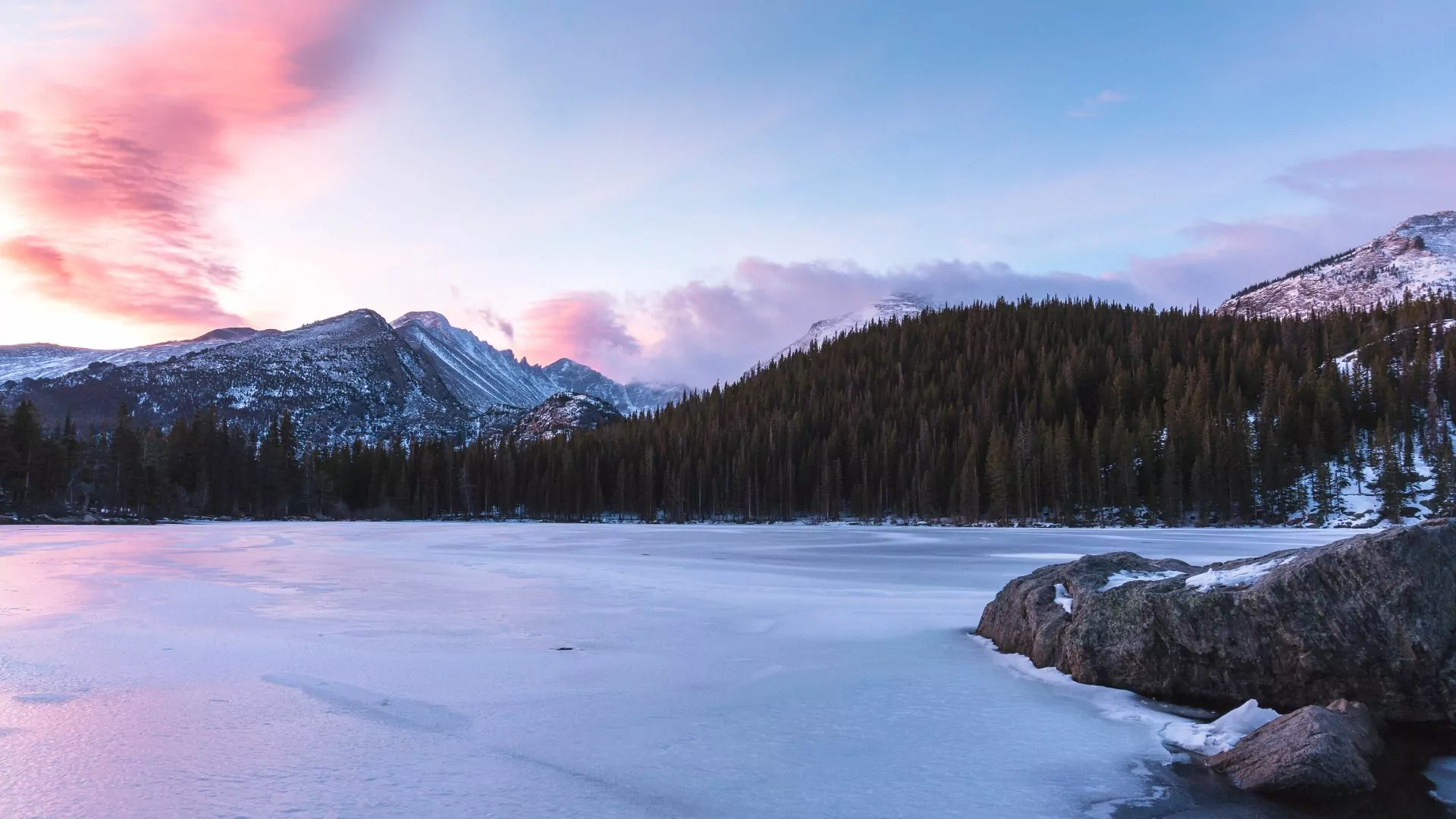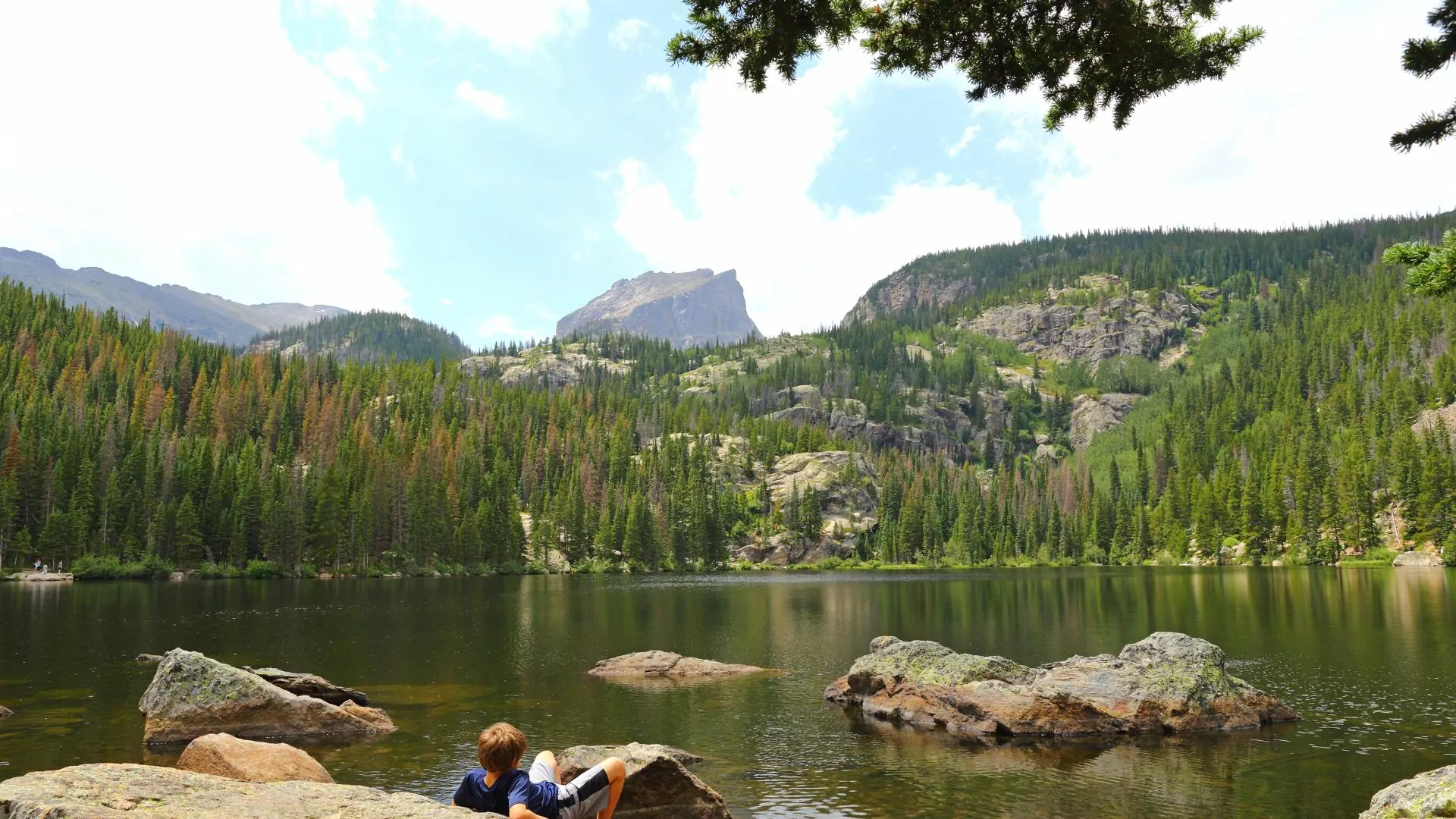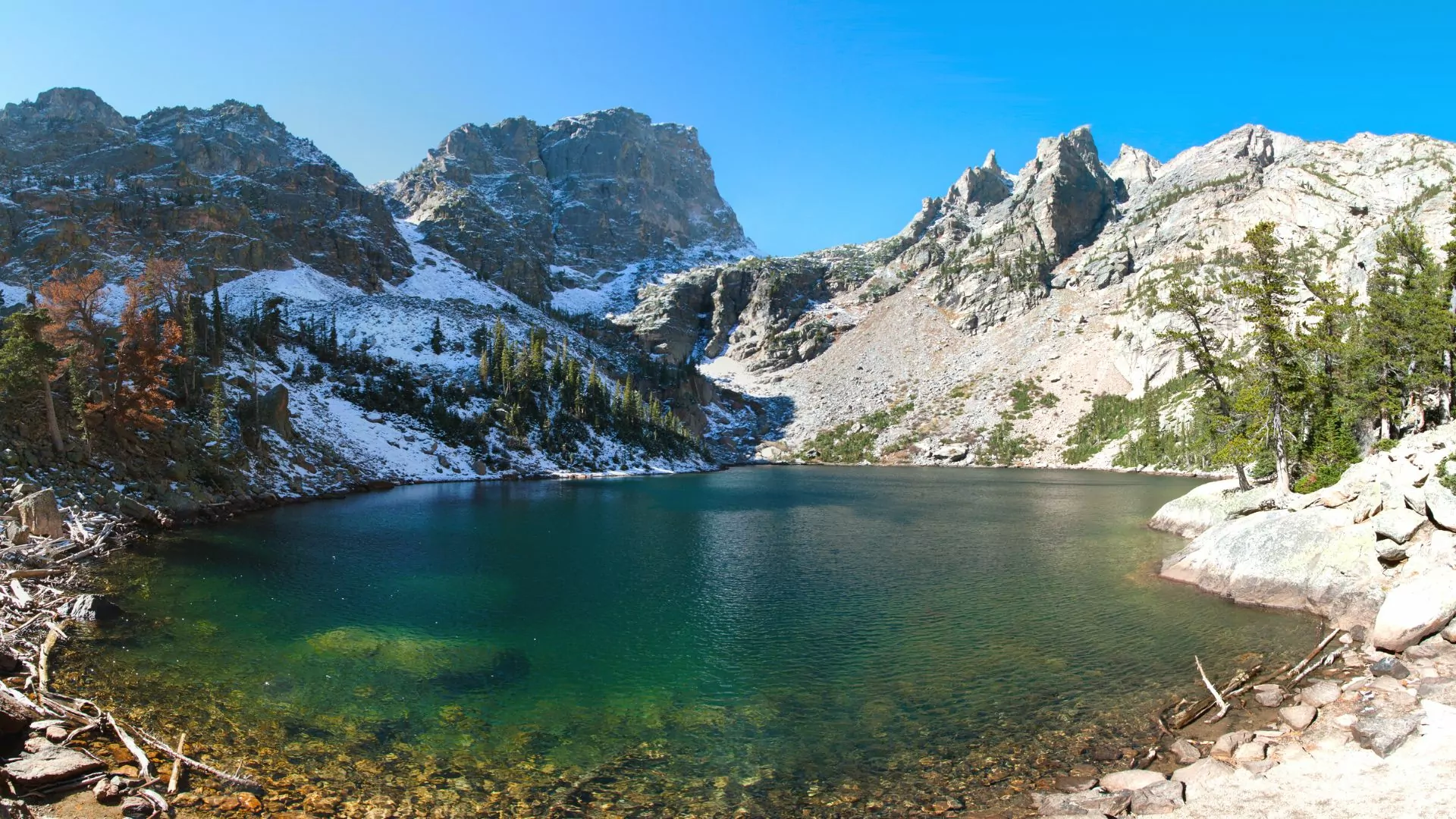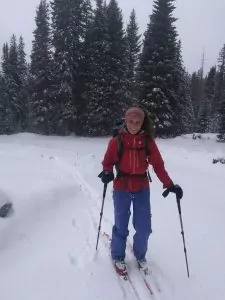Alpine Lakes of Rocky Mountain National Park

Rocky Mountain National Park is a paradise for outdoor lovers. Beneath many of the 13 and 14-thousand-foot-tall peaks that populate this high-elevation park, sit stunning alpine lakes. These often crystal clear, freezing cold lakes are formed from old glacier melt or spring snow runoff. They’re all well worth the hike to get to their clear blue waters.
Whether you’re looking to go for a refreshing swim on a hot summer day, a hike through breathtaking scenery, or a backpacking trip in the wilderness, there are plenty of trails and lakes in Rocky Mountain National Park that offer all of these experiences and more.
In this blog post, we’ll take a closer look at some of the most beautiful and worthwhile lakes in Rocky Mountain National Park. Whether you’re visiting the area on a road trip or are a Denver area local looking for a summer getaway, there’s something for everyone in the Rocky Mountain backcountry.
Lakes with the best views in Rocky Mountain National Park
You really can’t go wrong with views in Rocky Mountain National Park. Many of the lakes in the park have incredible views, as do the trails. Many of these lakes are accessible by a short hike, while others are roadside. Wherever your feet take you, the views are incredible in Rocky Mountain National Park.
Dream Lake
Located in the heart of the park, Dream Lake is one of the most picturesque and serene lakes in Rocky Mountain National Park. Surrounded by towering peaks and a lush forest of spruce and fir trees, the lake offers a stunning reflection of its surroundings, especially during the early morning or late afternoon.
The hike to Dream Lake is about 2 miles, making it accessible for a variety of hiking experience levels. On your way to Dream Lake, you’ll pass lily-filled Nymph Lake. After visiting Dream Lake, you’ll have the option of continuing to Emerald Lake or Lake Haiyaha, two higher-elevation alpine lakes with incredible views.
Bear Lake
Bear Lake is another popular and stunning alpine lake that’s easily accessible. This lake is located at the base of Hallett Peak and Flattop Mountain, providing a stunning backdrop for photographs and a peaceful place to relax.
Bear Lake sits right at the Bear Lake trailhead, with only a half-mile round-trip hike needed to the edge of the water. If you’re looking for a longer hike, you can continue around the lake, or take the trail to Nymph Lake and beyond.
Emerald Lake
Emerald Lake is another breathtaking lake located in Rocky Mountain National Park. The lake is named for its vivid emerald color, created by the sunlight reflecting off the mineral particles in the water.
The trail to Emerald Lake is about 3 miles and 600 feet of elevation gain, making it an easy to moderate trail. Surrounded by majestic mountains and a forest of pine trees, Emerald Lake is one of the most beautiful and tranquil lakes in the park.
Chasm Lake
Nestled at the base of Longs Peak, Chasm Lake is an iconic and stunning place to visit. The 9-mile round trip trail takes you past waterfalls and streams, through fields of wildflowers, and up to the base of this 14,000-foot peak where Chasm Lake sits.
Lakes to swim in at Rocky Mountain National Park
Swimming is allowed in pretty much all lakes in Rocky Mountain National Park, except Bear Lake, where you’ll find a posted sign prohibiting it. Swimming in these lakes is refreshing after a long hike, but probably looks more like jumping in and running out as many of the high-elevation lakes are freezing cold year-round.
But when it’s nearing triple digits in the cities of the front range, escaping to higher elevations and cold water sounds marvelous. Here are a few options for a beach vacation in the mountains of Colorado.
Sandbeach Lake
If you’re craving sandy beaches, Sandbeach Lake delivers. Unlike many of the alpine lakes in Rocky Mountain National Park, Sandbeach Lake is lined with sand, not rocks or vegetation. It makes for a perfect sunbathing spot, and you’ll be ready for a dip in the lake after hiking the 4.5 miles and 2000 feet of elevation gain to get there. If you’re looking for a good hike and a place to lounge before heading back downhill, add Sandbeach Lake to your list of hikes.
Sprague Lake
If you’re looking for a lake to swim in closer to the car, Sprague Lake could be a great option. Sprague Lake is also one of the lower-elevation alpine lakes in Rocky Mountain National Park, so it is warmer than some of the higher-elevation lakes.
Lakes to hike or backpack to in Rocky Mountain National Park
There are so many beautiful lakes in Rocky Mountain National Park that are worth hiking or camping at. These backcountry lakes are further from roads than others on this list, but if you’re an experienced hiker or backpacker, are worth checking out. Excited about the idea but not planning the trip yourself? Wildland Trekking offers several Rocky Mountain National Park backpacking trips at stunning lakes.
Sky Pond
Sky Pond is a gorgeous alpine lake nestled in the Rocky Mountain National Park backcountry. With a 9-mile round trip hike to get there, it makes for a perfect one-night backpacking trip or day hike. If you’re planning to camp, the closest campsites are at Andrews Creek and should be reserved ahead of time due to their popularity.
Fern Lake
Fern Lake is a popular and stunning destination for hikers and backpackers alike. Start at the Bear Lake trailhead and hike 8.5 miles up to Fern Lake. After hiking past other beautiful lakes and through forests and meadows, you’ll find Fern Lake. The lake sits surrounded by towering peaks and a forest of pine trees. Camping at Fern Lake is an unforgettable experience, with the tranquil sound of the lake lapping at the shore and breathtaking views of the stars at night.
What is an alpine lake?
Alpine lakes are a unique and beautiful feature of high-elevation landscapes, such as those found in Rocky Mountain National Park. These lakes are found in alpine environments across the United States, and while they are often at elevations of 5,000 feet or higher, some mountain ranges have alpine lakes at lower elevations. Alpine lakes are typically formed by glacial activity or other geologic processes.
What sets alpine lakes apart from other bodies of water is their crystal-clear water, vivid colors, and stunning mountain backdrops. In addition, they often support a unique ecosystem of plants and animals that have adapted to survive in these alpine environments. They are often surrounded by fields of wildflowers, in alpine meadows, and towering peaks.
Whether you’re an avid hiker or simply enjoy taking in the natural beauty of the world around you, exploring the alpine lakes of Rocky Mountain National Park is an unforgettable experience.
Explore the Lakes of Rocky Mountain National Park
Rocky Mountain National Park features an incredible array of stunning lakes, each of them special in different ways. Whether you are an avid hiker, a seasoned camper, or simply looking for a place to relax and enjoy nature beside the road, the park’s lakes are a must-see. So, what are you waiting for? Start planning your next adventure to Rocky Mountain National Park today!







